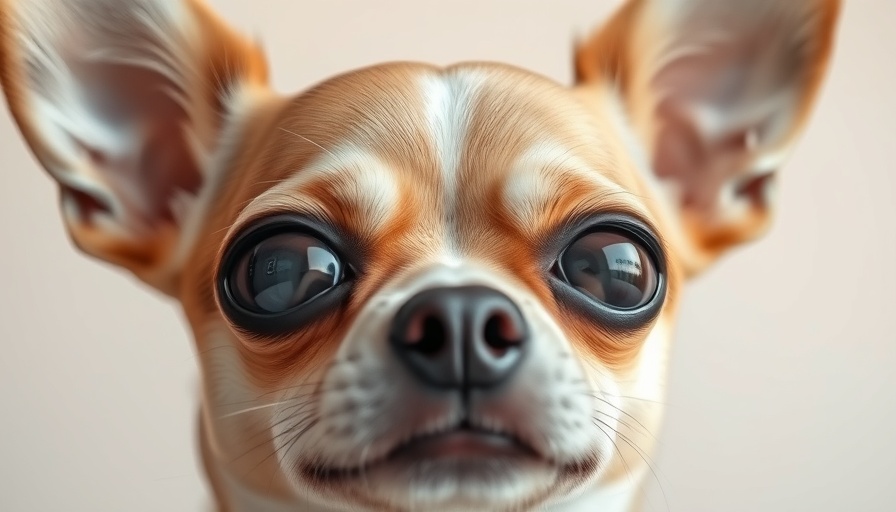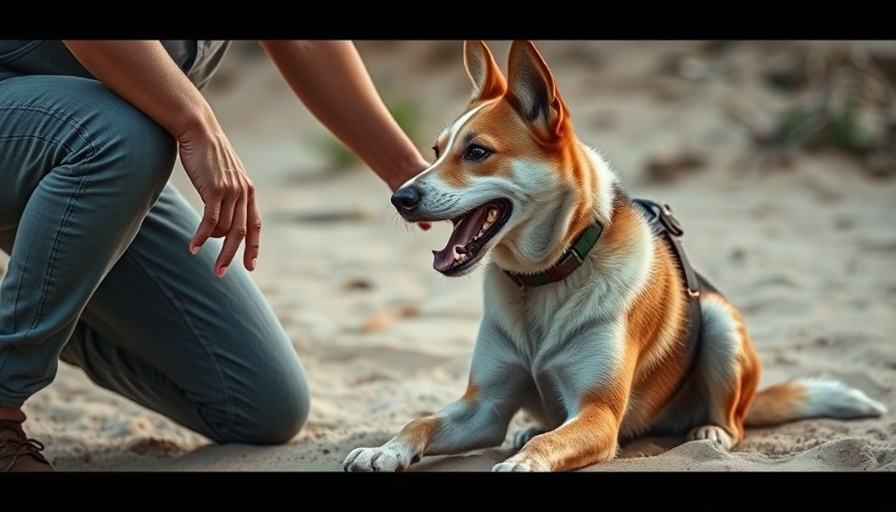
Understanding Canine Cataracts: A Serious Yet Manageable Condition
As dog owners, we cherish the moments when we gaze into our furry friends' eyes, hoping to see the brightness of their spirit reflected back at us. However, as time passes, we may notice that sparkle is being obscured by a cloudy haze. This condition, known as cataracts, is not uncommon in dogs, and although it can be alarming, it is manageable with the right knowledge and care.
What Are Cataracts?
In simple terms, cataracts occur when protein fibers in the lens of a dog's eye clump together, resulting in a clouding effect that impairs vision. Picture your dog’s eye as a camera lens: when the lens is clear, the images seen are bright and distinct. But when cataracts develop, it’s akin to fog settling over that lens, leading to diminished clarity.
The development of cataracts can stem from various causes, with genetics being a primary factor for certain breeds such as Cocker Spaniels, Poodles, and Labradors. Other contributing factors can include diabetes, age-related changes, and even trauma to the eye. It’s crucial for dog parents to be vigilant in recognizing the early signs.
Recognizing The Symptoms
Signs of cataracts may manifest as cloudy or milky eyes – where the once-bright eyes appear veiled – alongside behaviors that suggest vision impairment. For example, a dog may bump into furniture, show hesitation on stairs, or exhibit unusual squinting. Ultimately, these behaviors may escalate if not addressed, leading to potential blindness.
Being proactive is key. Observe your dog regularly and consult a veterinarian if you notice changes. Remember, early detection not only improves treatment options but can also be pivotal in maintaining your dog’s quality of life.
Treatment Options: Surgery and Home Care
While surgery remains the only definitive treatment for cataracts, it boasts success rates of 85% to 90% in uncomplicated cases. The procedure involves removing the cloudy lens and typically replacing it with an artificial one, allowing many dogs to regain their sight. It’s vital to consult with a veterinary ophthalmologist to discuss this option.
For milder cases or as a complementary approach to surgery, dog owners can consider certain eye drops and dietary supplements aimed at supporting eye health. However, these should not be viewed as a cure, as they do not eliminate the cataracts.
Creating a Safe Environment at Home
As a pet parent, safeguarding your dog's well-being extends beyond medical care. Creating a nurturing home environment can significantly impact your dog's ability to manage their vision impairments. Simple adjustments, like removing obstacles and maintaining a consistent layout, will help your dog navigate their space safely. Additionally, using voice cues can support their orientation.
Protecting your dog’s eyes from direct harm is also crucial. Safeguards against UV light and potential injuries can shield their remaining vision and ensure a quality life. Limit outdoor exposure during peak sunlight hours, and ensure safe play areas.
Emotional Support: Enhancing Comfort and Connection
Your dog's emotional well-being is equally important during this journey. Cataracts can be distressing not only for the dog but for their owners as well. Being empathetic to your dog’s struggles with vision loss and providing them with gentle reassurance can strengthen your bond and ease their emotional distress.
This challenging experience often requires patience and understanding. Spending quality time with your furry friend, providing comfort, and being mindful of their needs will assure them of your unwavering support.
Stay Informed and Seek Professional Advice
Being an informed pet owner means keeping up-to-date with your dog's health. Consistent veterinary check-ups are vital. Your veterinarian can provide tailored advice based on your dog's specific needs and health history. It's always better to err on the side of caution and seek help at the first sign of concern.
In conclusion, while cataracts can disrupt a dog's life, they don't have to define it. With a blend of vigilance, timely veterinary action, and supportive homecare, many dogs continue to lead happy lives alongside their owners despite these challenges. Stay aware, be proactive, and your dog will thrive.
If you have seen any signs of cataracts in your dog or have questions about their eye health, don't hesitate to consult your veterinarian today. Keeping your pet's health in check ensures not only their happiness but your peace of mind.
 Add Row
Add Row  Add
Add 




Write A Comment